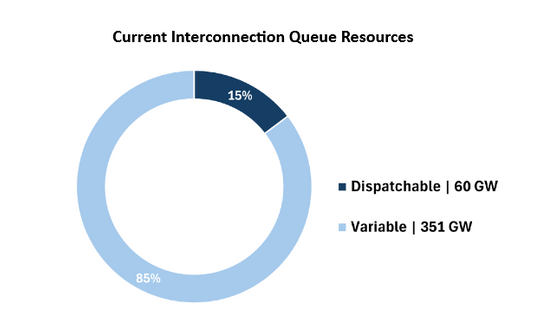AI is increasing the risk of blackouts, and surges in demand from data centers are putting a strain on the power grid

In a report submitted in December 2024, the North American Electric Reliability Council (NERC) reported that there is a growing risk that more than half of the continental United States will experience an energy shortage in the next five to ten years. One of the causes is said to be the massive consumption of electricity by newly constructed data centers while power plants are being decommissioned.
Urgent Need for Resources over 10-Year Horizon as Electricity Demand Growth Accelerates, 2024 LTRA Finds
Matheson: Long-Term Grid Reliability Under Continued Threat, Pro-Energy Policy Response Needed - America's Electric Cooperatives
https://www.electric.coop/matheson-long-term-grid-reliability-under-continued-threat-pro-energy-policy-response-needed
Half US at high risk of power shortfall in next decade, regulator says | Reuters
https://www.reuters.com/business/energy/half-us-high-risk-power-shortfall-next-decade-regulator-says-2024-12-17/
According to NERC, the demand for electricity is expected to increase significantly in the future due to a rapid increase in AI data centers, which can be built in a relatively short period of time and consume huge amounts of electricity, as well as electrification in various fields and increased commercial and industrial loads such as the construction of new manufacturing facilities due to electrification.
Additionally, insufficient efforts to increase electricity generation and a projected continued retirement of power plants are creating a growing imbalance between supply and demand, NERC reports, which could lead to energy shortages in more than half of the continental United States over the next five to 10 years.

According to a map divided into regions under the jurisdiction of electric power companies, the central region is particularly likely to experience power shortages, with the main cause being the closure of power plants.

The loss of electricity due to the decommissioning of power plants will amount to a total of 115GW over the next 10 years. The trend towards decommissioning is mainly due to the promotion of reducing fossil fuels, and most fossil fuel power plants are expected to be replaced by solar and wind power plants whose power output fluctuates depending on the environment.

NERC presented data showing that 'as of 2024, 85% of power plants will be variable, and only 15% will be controllable, such as fossil fuel power plants,' and called for 'generators that can generate sufficient amounts of electricity with a guaranteed fuel supply, such as natural gas.'

Electricity demand forecasts announced every year are also increasing year by year, and as of 2024, it is predicted that electricity demand will increase by 17% by 2034. In particular, peak demand in the summer is expected to increase by 15.7% over the next 10 years, and in the winter it is also expected to increase by nearly 14% over the same period.

In response to the NERC report, Jim Matheson, CEO of the National Rural Electric Cooperative Association (NRECA), said, 'The report continues to paint a grim picture for our nation's energy future and the growing threats to our electricity. We urge President-elect Donald Trump and congressional leaders to prioritize investments in energy production, manufacturing and infrastructure now.'
Centrus Energy, which produces enriched uranium for commercial and government use, said: 'Nuclear power plants operate 24/7 and are a critical bulwark against power outages. They are the most reliable generating stations on the power grid. To maintain a stable power grid, we need to maintain our existing nuclear plants and build more.'
Nuclear plants operate 24-7-365, making them a key bulwark against costly & dangerous blackouts. They are, by far, the most reliable power plants on the grid. To maintain a stable grid, we need to maintain our existing nuclear plants and build a lot more. (3/5)
— Centrus Energy (@centrus_energy) December 17, 2024
Building on its report, NERC called on the government to take action to ensure energy demand is met, including by carefully considering the pace of plant retirements, strengthening long-term supply and demand assessments by incorporating regional energy analyses, and enlisting the support of regulators and policymakers at the federal and state levels.

In order to cope with the increasing power consumption and the global trend to shift to renewable energy, various efforts are being made in various countries. For example, in the UK, several major energy companies have pledged to spend up to 77 billion pounds (about 15 trillion yen) over five years to shift from fossil fuels to clean electricity.
In Japan, the Ministry of Economy, Trade and Industry has stated the following (PDF file): 'In addition to the construction of new data centers and semiconductors, changes in industrial structure due to the progress of digitalization and decarbonization are likely to lead to increased demand for electricity, even when energy conservation trends are taken into account.' 'At present, we are planning to secure supply capacity through the capacity market, long-term decarbonized power source auctions, reserve power source system ( system design in progress), etc.'
Related Posts:
in Posted by log1p_kr







